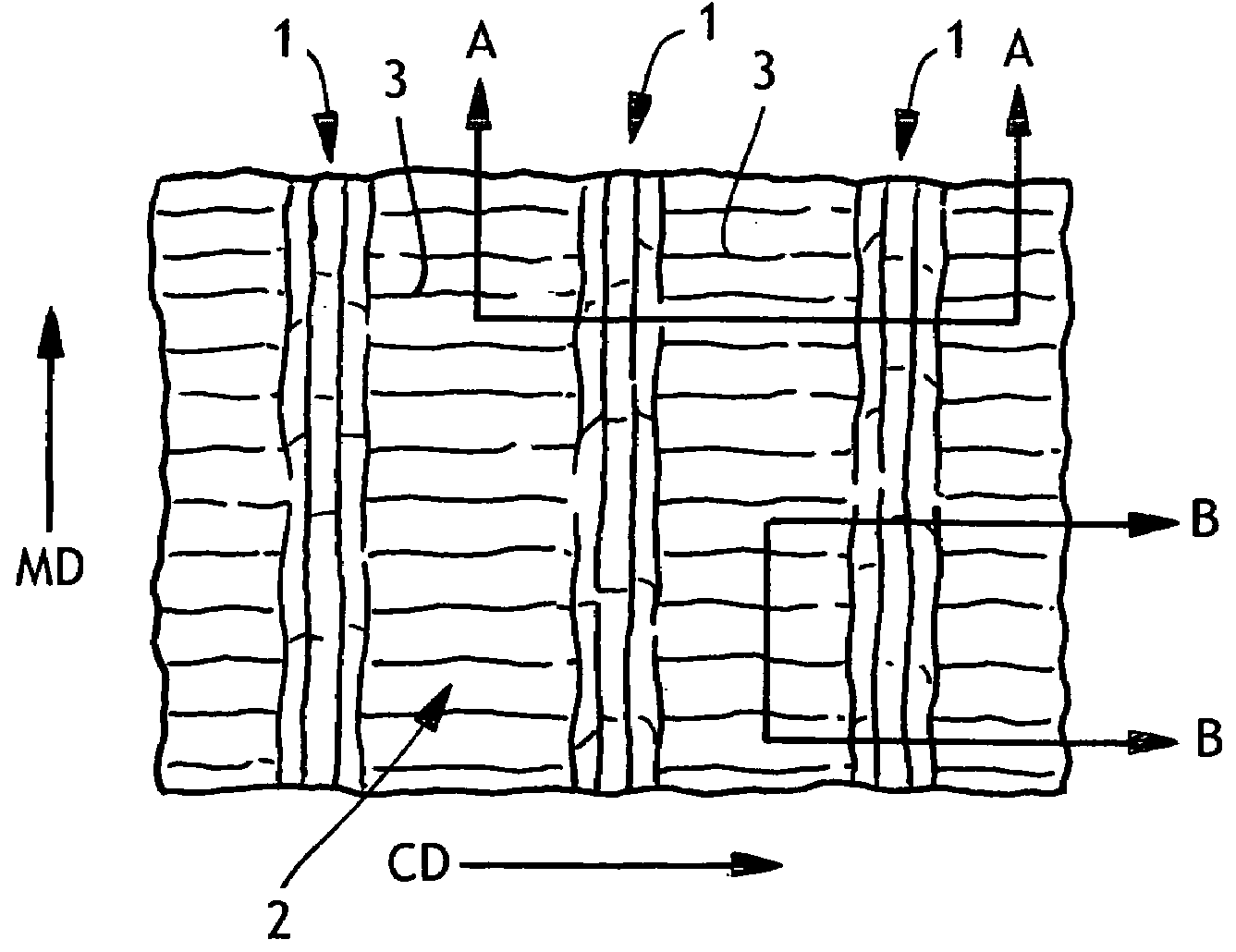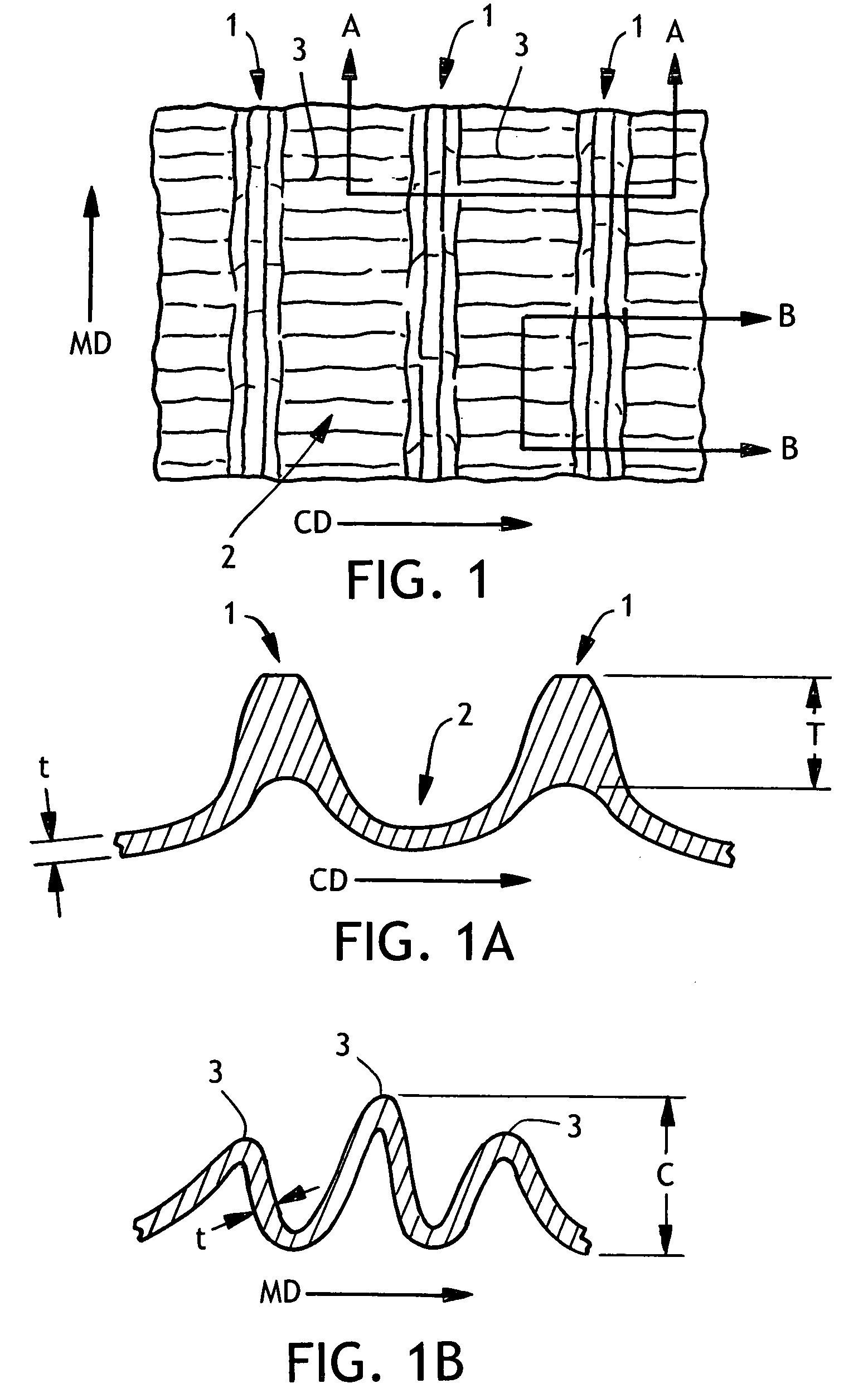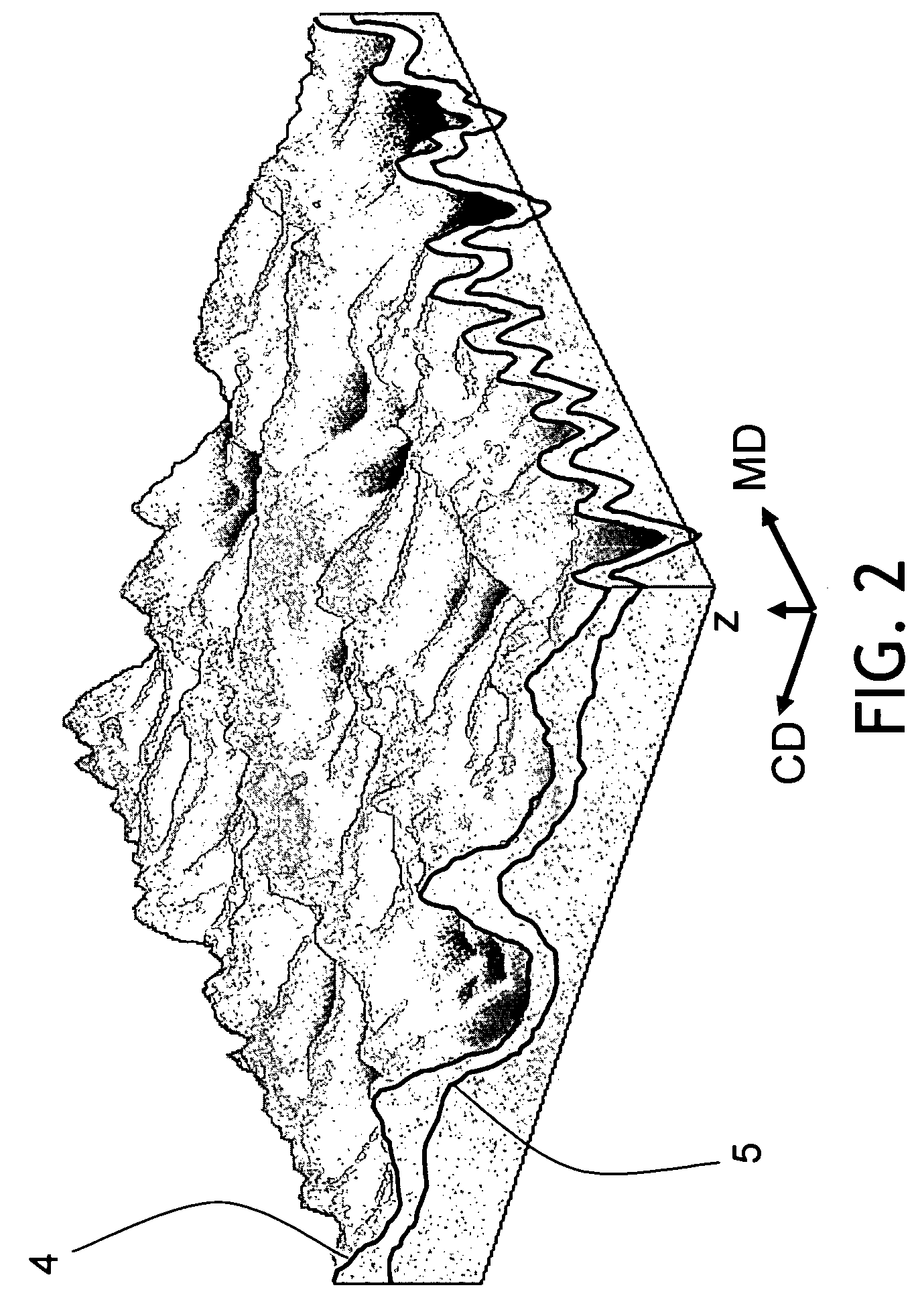Molded wet-pressed tissue
a tissue and wet pressing technology, applied in papermaking, non-fibrous pulp addition, coatings, etc., can solve the problems of low production rate and energy cost of dewatering, low product characteristics, and inability to achieve high speed, low basis weight, and high speed
- Summary
- Abstract
- Description
- Claims
- Application Information
AI Technical Summary
Benefits of technology
Problems solved by technology
Method used
Image
Examples
example 1
[0061]Tissue sheets in accordance with this invention as illustrated in FIGS. 1-7 were made using the process as described above in connection with FIG. 8. In particular, a crescent former was used to make a lightweight paper sheet of 13.8 gsm. The furnish was a 30:70 blend of northern softwood and eucalyptus fibers. The paper machine speed at the Yankee dryer was 800 meters / minute. The wet tissue web was transferred to a felt and partially dewatered with vacuum to a consistency of about 25% solids. The web was then compressively dewatered with an extended nip press at a load of 600 kNt / m, with a peak pressure of 6 MPa. The felt and web were pressed against a smooth belt similar to an Albany LA particle transfer belt with a roughness of about 3 micrometers. Upon exiting the press, the web was adhered to the transfer belt. The belt and web traveled around the press roll and were then brought into contact with the texturizing fabric illustrated in FIG. 9, which had been sanded to impr...
example 2
[0064]A tissue sheet was made generally as described in Example 1, except that the paper machine speed at the Yankee dryer was 1000 m / min and the basis weight was targeted for a 1-ply finished product. The dryer basis weight was 22.0 gsm, and the vacuum level supplied to the inside of the vacuum roll was 40 kPa. The texturizing fabric was of a style similar to that in FIG. 9.
[0065]The physical properties of the resulting tissue sheet were as follows:
[0066]
Basis weight (bone dry)gsm27.6Caliperμm316Bulkcm3 / g11.4Stretch (MD)%30.0Stretch (CD)%5.6Tensile (MD)N / m193Tensile (CD)N / m90
example 3
[0067]A tissue sheet was made generally as described in Example 1, except that the paper machine speed at the Yankee dryer was 1000 m / min and the texturizing fabric was of a style similar to FIG. 13. The dryer basis weight was 13.7 gsm. There was a 3% rush transfer at the time of the transfer of the web to the fabric. The resulting tissue was similar to that shown in FIG. 14.
[0068]The physical properties of the resulting tissue sheet were as follows:
[0069]
Basis weight (bone dry)gsm17.1Caliperμm293Bulkcm3 / g14.2Stretch (MD)%28.8Stretch (CD)%6.9Tensile (MD)N / m124Tensile (CD)N / m41
PUM
| Property | Measurement | Unit |
|---|---|---|
| angle | aaaaa | aaaaa |
| angle | aaaaa | aaaaa |
| angle | aaaaa | aaaaa |
Abstract
Description
Claims
Application Information
 Login to View More
Login to View More - R&D
- Intellectual Property
- Life Sciences
- Materials
- Tech Scout
- Unparalleled Data Quality
- Higher Quality Content
- 60% Fewer Hallucinations
Browse by: Latest US Patents, China's latest patents, Technical Efficacy Thesaurus, Application Domain, Technology Topic, Popular Technical Reports.
© 2025 PatSnap. All rights reserved.Legal|Privacy policy|Modern Slavery Act Transparency Statement|Sitemap|About US| Contact US: help@patsnap.com



